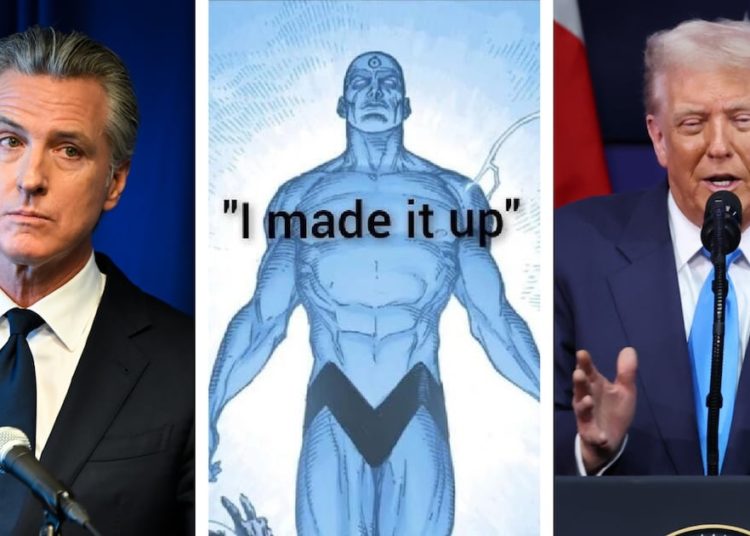The long, butter-colored building with green stripes lies low in a Spanish vineyard like a steel caterpillar. It is a rare species — believed to be the only prefabricated metal house of its type in Europe by a prolific yet little remembered French engineer named Ferdinand Fillod.
The building, the Tropical Pavilion, a 969-square-foot steel structure dating to 1951, will be on view through September at Terra Remota, a winery in northeastern Spain. After that, architecture buffs can travel to Vietnam, Martinique or Réunion Island, east of Madagascar, if they want to see another example.
Or they can buy this one. The price is 900,000 euros (about $1.06 million).
Born in 1891, Fillod began his career manufacturing steel agricultural equipment, including boilers, manure tanks and storage sheds. With the increased demand for housing in interwar France, he developed ideas for affordable dwellings made of metal. He filed his first architectural patent in the late 1920s, several years before similar experiments by his better-known countryman Jean Prouvé, as historians have pointed out.
The pavilion in Spain, which includes a 323-square-foot terrace, went on display in June after a restoration by its owner, Clément Cividino, the founder of a modern design gallery in nearby Perpignan, France.
Speaking on a video call through a French-language interpreter, Mr. Cividino, 42, said he believed Prouvé and his design contemporaries Charlotte Perriand and Le Corbusier receive an inordinately large slice of attention today. “They were surrounded by a whole bunch of architects who worked internationally but remained in the shadows,” he said. Some of the contributions of these lesser-knowns, Fillod among them, were “more important,” he said.
In 1947, Fillod introduced a galvanized steel pavilion with slanted walls, later adding a parapet to the roof to aid in ventilation and cooling. The modular buildings were cheaply manufactured and easy to assemble with a hammer — a team of five untrained workers could put one together in 24 hours. Sturdy enough to withstand major weather events and reasonably comfortable even in infernal or frigid zones, they were produced in the tens of thousands.
The structures consisted of thin double panels of steel clamped to a procession of arched members and insulated with fiberglass or other materials, depending on the location. Serving as workers’ housing, schoolrooms, army barracks and at least one chapel, they popped up in French territories throughout the world — and even in Antarctica — according to Karine Thilleul, a lecturer at the National School of Architecture, in Nancy, France.
But as Neil Young once put it, “rust never sleeps.” Over the decades, the Tropical Pavilions eroded and dwindled.
“Fillod wanted to create ‘the cheapest affordable houses worthy of the name,’” Laurent Poupard, an architectural historian, wrote in a 2017 essay, quoting the engineer.
Fillod exceeded Prouvé in realizing his ambitions, Mr. Poupard wrote, but his design proved more successful for industrial purposes than for residential.
As the price of steel rose over the decades and supplies were regulated by the French government, Fillod’s once vibrant business operations fizzled. His two companies, which continued beyond his death in 1956, both closed by 1986.
“Indeed, in the French collective imagination, a metal house still rhymes with temporary construction, emergency construction, hence the small number of surviving examples,” Mr. Poupard wrote.
That the Tropical Pavilion survived to luxuriate in a vineyard is something of a miracle. The building was a prototype that had been dispatched to the south of France early in its life to test how it would behave in hot climates, Mr. Cividino said.
Starting in the 1950s, it housed the office of France Télécom, the telephone company now known as Orange, in the port city of Marseille. In 2003, on the verge of being razed because of its poor condition, it was instead disassembled in a project financed by a regional department of the French Culture Ministry and transferred to the Marseille National School of Architecture, where it was to be rebuilt and used as a model workshop.
That never happened. Government funds to complete the task failed to materialize, and the building lay in a jumble of parts for almost a decade.
In 2007, the Culture Ministry designated the jumble a 20th Century Heritage site. This honor, though it sounds impressive, carries little influence on the fate of a historic building, said Ariela Katz, who is an architect and architectural historian recently based in France. The label in general is the subject of controversy, she said, “because it recognizes but doesn’t protect.”
In 2013, an engineering company near Marseille called SETEC symbolically paid a single euro to acquire the ruin. Its plan was to restore the pavilion and incorporate it into its headquarters, which included a Prouvé-designed building.
That didn’t happen either.
Four years later, Mr. Cividino was roaming around SETEC’s grounds because of his interest in the Prouvé building when he noticed a pile of metal behind the headquarters, half-buried in vegetation. He recalled thinking he might have stumbled onto the bones of a Prouvé prefab. Instead, he had encountered what was believed to be the only Fillod Tropical Pavilion left in Europe.
“All the dealers in the field knew that this Tropical Pavilion existed,” he said. “Nobody knew that it had been dismantled, and nobody knew where it was.”
Mr. Cividino is known for acquiring and tidying up rare works of micro architecture. In 2022, at Terra Remota, he presented a yurt-like temporary structure called the Marabout House, which was designed in 1958 by the French engineer Raymond Camus and produced in Prouvé’s workshop. The next year, he showed a biomorphic pod house elevated on four little legs that was created in 1969 by the Greek architect Nikolaos Xasteros. (Brad Pitt went on to buy it.)
After SETEC decided to part with the ruin, whose origins it disclosed, Mr. Cividino won out over other suitors, he said, because of the care he had shown in reviving the Marabout, a similarly ingenious double-roofed structure. In early 2024, he bought the Tropical Pavilion for a symbolic euro, after which he paid upward of 35,000 euros ($40,826) simply to clear away the weeds and load the components onto four big trucks that conveyed them to his warehouse.
Luckily for him, the Culture Ministry had recruited architecture students to document the pavilion’s disassembly two decades before. The parts were inventoried and photographed, so he soon learned that 30 percent of the original structure had disappeared or was unsalvageable. Two-thirds of the bolts connecting the panels to the frame had rusted.
The loss of material was not such a big deal in a modular building; the length was simply shortened. An ironworker recreated the missing floor. Technicians, with tiny hammers that were normally used to fix automobiles that had been struck by hailstones, smoothed out dents in the panels. New bolts were procured.
Because the pavilion lacked strict landmark status, Mr. Cividino could have taken wild liberties with the restoration, but he consulted with the Culture Ministry to remain true to Fillod’s aims. The agency, he said, was grateful to see the project through — at last.
Still, the revival departed from its designer’s conception in a few ways. The original was pale yellow, and only the doors were green. With the Culture Ministry’s blessing, Mr. Cividino extended the green hue to highlight the elegance of the deceptively simple structure. Inside and out, the accent color draws the eye to the hoops that are the building’s bones.
Floor-to-ceiling windows surrounding a pivoting glass door fill out the rear. So much glass would not have been practical in sun-bleached deserts or artillery-packed war zones, but aligned with Fillod’s emphasis on adaptability.
Inside, the pavilion is furnished with objects from Mr. Cividino’s gallery, including a Le Corbusier serving hatch, a Ron Arad bookcase and chair and a storage unit by André Wogenscky and Marta Pan.
“The profession of a dealer is always to bring something new to light,” Mr. Cividino said. “A lot of people nowadays just sell things everybody is selling, and you will find Jean Prouvé on my website, too. But for me, that’s a means of earning money, which we then use to finance more innovative projects.”
The post In a Spanish Vineyard, an Unsung Engineer Finally Gets a Toast appeared first on New York Times.




